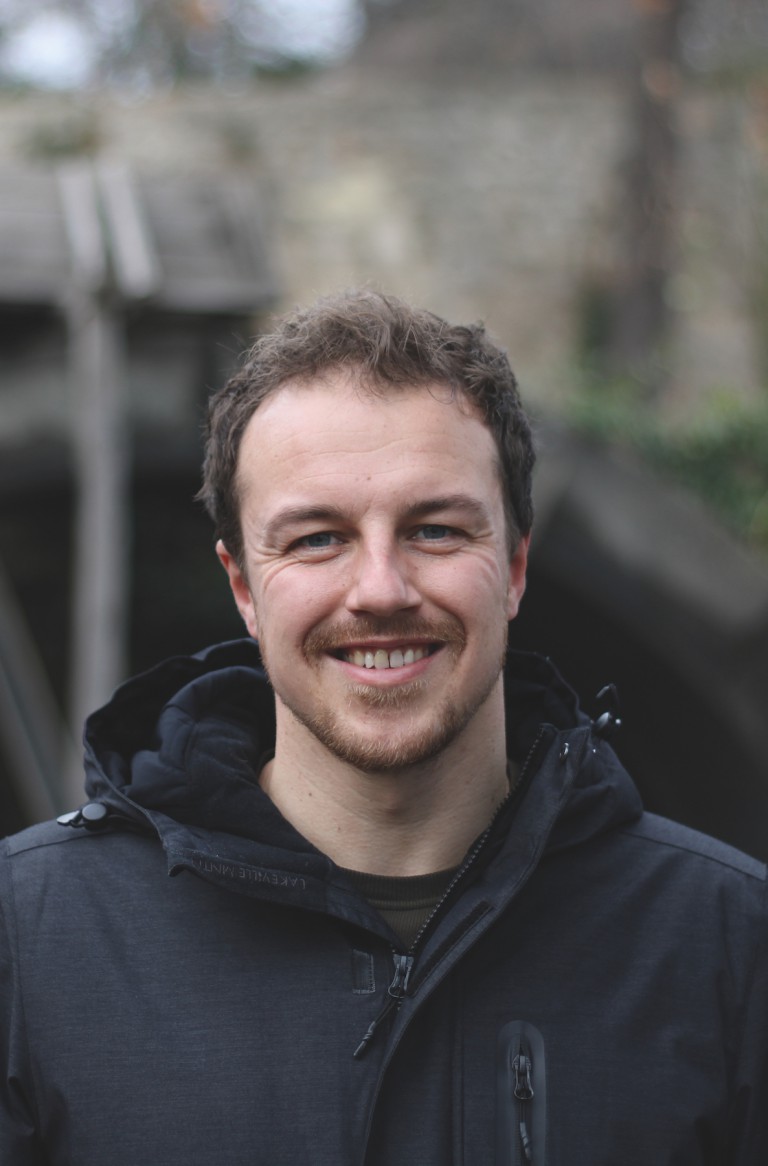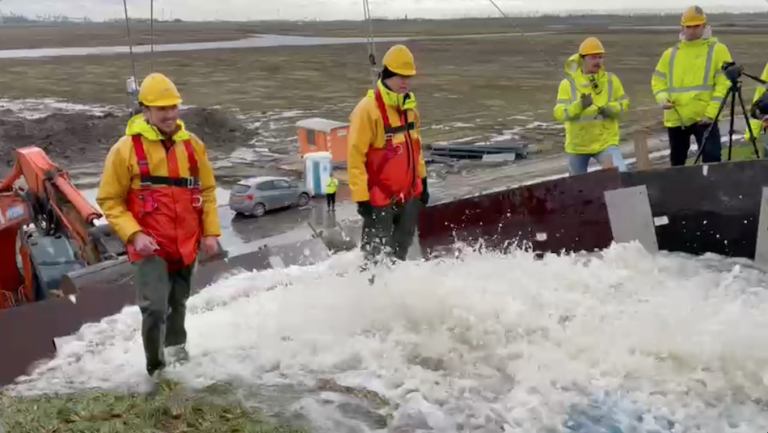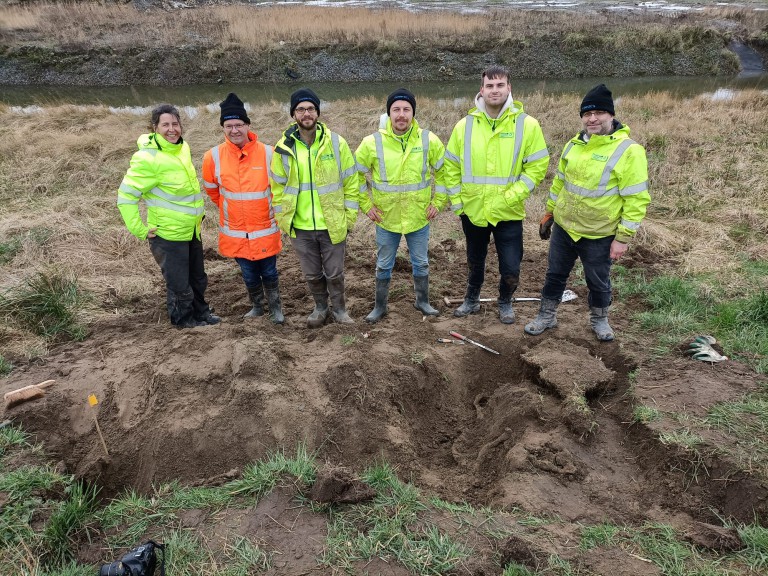Partner of the month interview: Delft University of Technology
- 15 June 2022
- Francien Horrevorts
- Knowledge Infrastructure
One of the strengths of Polder2C’s is that it is an international project, where many parties work together, share expert skills and facilitate knowledge transfer. A total of fourteen partners from the Netherlands, Belgium, France and the United Kingdom participate in the project. Each month we put one of our partners in the spotlight. In June our partner of the month is Delft University of Technology (TU Delft).
TU Delft
TU Delft in the Netherlands is one of Europe’s leading universities on flood defences. The Department of Hydraulic Engineering is involved in the Polder2C's project. They focus on research and education in the natural dynamics of coastal and estuarine systems, the assessment of engineering interventions in natural environments and the development of methods for probabilistic design and flood risk management.
Stephan Rikkert, Postdoctoral researcher in the field of Hydraulic Engineering, represents TU Delft for this interview.

What is the core business of your organisation?
The main tasks of Delft University of Technology include providing research and design-oriented education (BSc, MSc and PhD degrees), conducting scientific research, transferring knowledge to society and promoting social responsibility. The university has been designated as a ‘public benefit institution’.
"Research and practice come together, and the project outcomes directly contribute to the safety of our coastal deltas."
Stephan Rikkert
What is the role of your organisation in the Polder2C’s project?
Our role in the project has to do with our core business: research and education. Therefore, our involvement in the project is mainly concerned with strength and reliability of flood defences and educating the next generation. Some of the main activities are participation in the planning and carrying out full-scale overflow and wave overtopping tests, analysing the test results and reproducing them through different models. We try to get students involved, for instance through internships, BSc and MSc theses, and multidisciplinary projects. Now that most of the tests and exercises have been carried out, we work on translating research findings into educational videos with the aim to disseminate new knowledge we gained during the project. We have also tried to have a bit of fun here and there too with our students and colleagues, such as initiating field work and organising a wave overtopping test on people.

TU Delft testing wave overtopping on people
What have we gained from the Polder2C's project until now, do you think?
Shortly after the project kick-off, we all had to comply to strict covid-19 regulations, which limited our opportunities to travel and meet project partners face-to-face. But I believe that we, the project partners, have dealt with this in a great way. We have always found ways to meet: often virtually, but also in the field, following strict covid protocols. We have always found ways to disseminate our newly gained knowledge and project results, by organising webinars and live Q&A’s online. These challenges have strengthened the collaboration between project partners, and I expect that we will keep working together with other project partners, after this project ends.
From the full-scale experiments and exercises we have gained many valuable insights and experiences. We have measured a lot and created a useful dataset that we are currently analysing, but also becomes available for others outside of the project to analyse and further improve existing methods and models or develop new ones.

TU Delft taking part in research into animal burrowing
What innovation or development are you eagerly waiting for?
Each levee is unique, we have experienced that during the experiments. Repeating a similar levee strength test on another location could lead to different results. This makes it on the one hand very challenging to predict how a levee will respond to certain load conditions, but at the same time it is really interesting to investigate what causes these different responses. Throughout the project, we have used many measuring techniques to find out what causes differences in levee behaviour. From in-situ to drone measurements. Techniques keep improving over time, and I am looking forward to being able to apply and combine techniques in such a way that we can have an accurate assessment of the levee’s reliability on each location and at every given moment.
"I am looking forward to being able to apply and combine techniques in such a way that we can have an accurate assessment of the levee’s reliability on each location and at every given moment."
Stephan Rikkert
What is the best thing someone can do to contribute to climate adaptation?
What our experience and also this project makes really clear, is that it is not easy to tackle this problem alone, so working together is the only way.
Why have you decided to be partner of the project?
The Interreg Polder2C’s project provides a unique opportunity for full-scale levee stress testing, while also collaborating with a number of partner organisations. With some of them we already have long-term collaborations, but others are new, which has been great. In the project, both research and practice come together, and the project outcomes directly contribute to the safety of our coastal deltas. At Delft University of Technology, we aim to do research that has impact for a better society, and therefore, we wanted to be part of this project. One of the main objectives of the project is educating the next generation, which at TU Delft, is one of our main tasks.
Read more
Read more on the Polder2C's research activities that TU Delft took part in:
>> Wave overtopping on people - Can people withstand heavy waves?
>> Animal Burrowing - Animal burrowing and levee strength - what have we learned so far?
